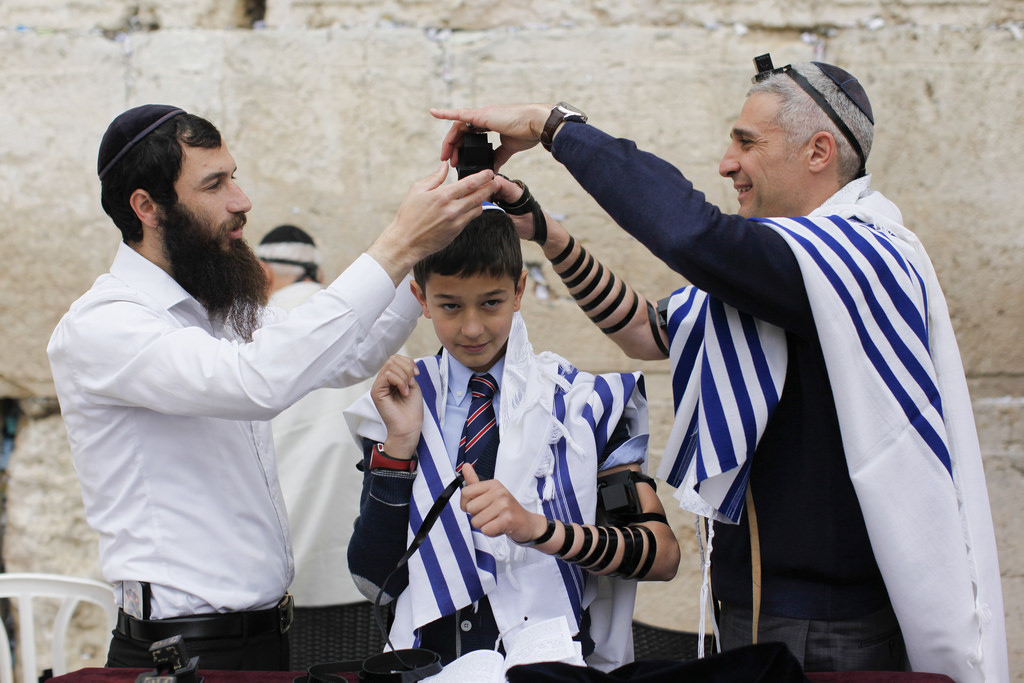When speaking of the mitzva of Tefilla, as numerous seforim bring down, one is fulfilling this great mitzva of Deveikus B’Shem, as long as one is concentrating on his or her communication with Hashem. We find this mitzva brought in numerous places. The main place is in Devarim 10:20 and again in Devarim 11:22. See the commentary of the Ramban (Nachmanodies) on both those verses where he discusses the concept of trying to have Hashem on our minds at all times, even when speaking to other people. The place this concept is brought most at length is in Moreh Nevuchim. Chalek 3 Perek 51-52.

This lengthy Rambam in Moreh Nevuchim is explained at great length by Hagoan Reb Chaim Friedlander ZT”L in his sefer Sifsei Chaim Midos V’Avodas Hashem Vol.1 from page 405 – 421. (See also from pages 421- 426 with regards to what he brings from the Mesillas Yeshurim in Chapter 19 as it relates very directly to Tefilla and to the inyan of Deveikus Bahashem during Tefilla.) Further on Rabbi Friedlander continues to explain this concept in various ways. See pages 472-473 and also page 478-479 about how saying brachos leads to dveikos BaHashem. In addition, see page 481 and page 486. )
Suffice it to say that the Rambam explains that anytime we think about Hashem we are fulfilling the mitzva of Deveikus and it is the MAIN mitzva that the Avos and Moshe Rabbeinu excelled in. They always had Hashem on their minds. The Rambam there gives advice on how to slowly train ourselves to think about Hashem by first working on our concentration during davening. Starting with the first pusuk of Krias Shema and the first bracha of Shemoneh Esrei. He of course uses that as a stepping stone to train oneself to much more constant thinking of Hashem. (See the sefer Nefesh Hachaim in Shaar Gimmel perek 12 and especially 13 where he also speaks about this Avodah of the Avos and Moshe Rabbeinu as well.) (The Rambam in Hichos Teshva Perek 10 halacha 3 explains this concept of always trying to think of Hashem as a big part of the Mitzva of Loving Hashem and therefore always thinking about Hashem. To delve on this however would be taking us off topic.) The Chayei Adam also brings in Klal 1 brings the mitzvas Asei of Uvo Sidbuk which is the mitzva for a person to always have Hashem in his thoughts.
In sefrei Chasidus this is a very main focus. I am sure that it is brought in numerous places, but I am not really familiar with sifrei chasidus, however I do have the seforim of the Nesivos Shulom, from the Slonimar Rebbe ZT”L and he speaks at length about this in Volume one under the heading of Uvo Sidbuk and he speaks about these points at length under the heading of Neseivei Tefilla which has 3 mamarim on Tefilla. Although many commentators say that the mitzva of Uvo Sidbuk is fulfilled by clinging, and associating with Talmiei Chachamim as much as possible, nevertheless, the sefer Hafla (In Kesubos, Daf 96a D”H Kul Hamonaya) and other commentators (Pnei Yehoshua on Kesuvos daf 111 and in the sefer Toldos Yaakov Yosef in Parshas Eikev where this pusuk is brought) explain that it certainly isn’t coming to exclude the simple meaning of clinging to Hashem through learning Torah and through performing other mitzvos. It’s just telling us that the mitzva of Uvo Sidbuk also includes even those who don’t learn Torah, nevertheless they can still fulfill the mitzva by clinging and having a close connection with Talmidei Chachomim that cling directly to Hashem through their learning of Torah. (See sefer Derech Hashem Chalek Bais, Parek Shlishi, number 8 where he talks about this point of being duvook In Talmidei Chachomim.
Included in all this is that whenever one makes a bracha and says Ata, and has in mind that he is standing before Hashem and speaking to Hashem when making the bracha he too is fulfilling the mitzva of deveikus BaHashem. This of course is what the Misillas Yeshurim is referring to in the beginning of the first chapter when he speaks how the main focus of our lives has to be that we be duvook Bahashem. Kirvas Elokim, which is deveikus BaHashem. (See the amazing sefer Bilvavi Mishkan Evneh, the entire Vol. 1 that speaks at length about the mitzva od Deveikus BaHashem.) So, Tefilla and Brachos are a great way to spend our lives clinging to Hashem. (Of course, I hope it is well known that learning Torah brings to the greatest connection to Hashem that’s humanly possible – see sefer Nefesh Hachaim Shaar Daled, the entire Shaar, and sefer Derech Hashem from the Ramchal Chalek 4 Chapter 2 that speak about the tremendous connection to Hashem that learning Torah brings to. That’s the meaning of Yisroel v’Oraisa V’Kudsha Brich Hu Chad hu.)
In sifrei Chasidus it is mentioned that the Ari Z”L said (and it is also mentioned from the Baal Hatanya) that now in the Ikvisa D’Mishicha, the main avoda of a yid is Tefilla. Well, whether it’s THE main Avodah, it’s certainly ONE of the main Avodas Hashem, as it has always been.
Visit the website of Rabbi Shmuel Waldman for more articles like this.